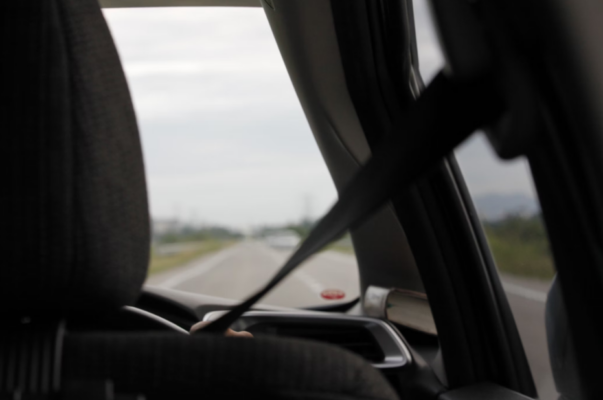Beyond the Backup Camera: Unveiling the Latest Car Safety Tech Features

The days of simply relying on mirrors and a healthy dose of caution while driving are fading fast. Car manufacturers are constantly innovating, developing a suite of safety features that not only make driving easier but, more importantly, safer for everyone on the road.
While the backup camera has become a standard feature, it’s just the tip of the iceberg when it comes to the latest car safety technology. Meanwhile, if you’re a big fan of playing online casino games, you may want to try out Blackjack real money to make a few quids to get some tech features running in your vehicle.
That said, buckle up and explore some of the most advanced features currently available and those on the horizon.
Guardian Angels on the Road: Active Safety Systems Take Center Stage
Move over, guardian angels – car safety tech is stepping up its game! Active safety systems go beyond simply warning drivers of potential hazards; they take proactive measures to prevent accidents altogether. Here are some of the key players:
- Automatic Emergency Braking (AEB): This system looks for possible collisions with oncoming cars or pedestrians using radar or cameras. The device will automatically use the brakes to assist prevent or lessen the impact if it detects an impending crash.
- Forward Collision Warning (FCW): A precursor to AEB, FCW serves as an early warning system. If the system detects a potential collision, it will alert the driver with visual and/or audible warnings, allowing them time to react.
- Lane Departure Warning (LDW) & Lane Keeping Assist (LKA): These features work in tandem to keep you between the lines. LDW uses cameras to monitor lane markings and will alert you if you start to drift out of your lane unintentionally. LKA takes it a step further, gently steering the car back into its lane.
A 360-Degree View: Enhanced Awareness with Advanced Sensor Technology
Modern cars are becoming increasingly aware of their surroundings. Advanced sensor technology like radar, lidar, and cameras paint a more complete picture of the road, allowing for features that improve both safety and convenience:
- Blind Spot Monitoring (BSM): This feature utilizes sensors to detect vehicles in your blind spots. If a car is present, a visual indicator will typically light up on your side mirror, alerting you to potential danger when changing lanes.
- Rear Cross Traffic Alert (RCTA): Backing out of a parking spot can be nerve-wracking. RCTA uses sensors to detect approaching vehicles from behind your car, providing an audible or visual warning to prevent potential collisions.
- 360-degree Surround View: Parking maneuvers made easy! This innovative feature uses multiple cameras to create a bird’s-eye view of your car’s surroundings, displayed on the infotainment screen. No more parking anxiety!
Tech for the Long Haul: Driver Assistance Features for Fatigue and Focus
Long drives can be tiring, and fatigue is a major contributor to accidents. Car manufacturers are developing features to keep drivers alert and focused:
- Driver Drowsiness Detection (DDD): This technology monitors driving patterns like steering inputs or eyelid movements to detect signs of drowsiness. If the system senses fatigue, it will trigger visual and/or audible alerts, urging the driver to take a break.
- Traffic Sign Recognition (TSR): Never miss a speed limit sign again! TSR uses cameras to detect and display road signs on the dashboard, helping drivers stay informed and avoid unintentional violations.
- Adaptive Cruise Control (ACC): Take the stress out of highway driving. ACC maintains a set distance from the car in front of you, automatically adjusting your speed as needed. This allows for a more relaxed and comfortable driving experience.
The Road Ahead: A Glimpse into the Future of Car Safety Tech
The future of car safety tech is brimming with exciting possibilities. Here’s a peek at what’s on the horizon:
- Vehicle-to-Everything (V2X) Communication: Imagine cars talking to each other! V2X technology allows vehicles to communicate with other cars and infrastructure, enabling them to warn each other of potential hazards like accidents or traffic jams, creating a more cooperative driving environment.
- Self-Driving Cars: While still in development, self-driving cars have the potential to revolutionize road safety. These autonomous vehicles use a combination of sensors, cameras, and artificial intelligence to navigate roads without human input, potentially reducing human error and accidents significantly.
Safety First: Choosing the Right Car Tech for You
With so many safety features available, it can be overwhelming to know where to start. The best app navigating the myriad safety features offered in modern vehicles can feel daunting, leaving many unsure of where to begin.
However, the key lies in tailoring your choices to your unique needs and driving behaviors. If you often find yourself on long journeys, advanced systems like Adaptive Cruise Control (ACC) or Driver Drowsiness Detection (DDD) could significantly enhance your driving experience.
Conversely, if parking poses a challenge, investing in a 360-degree surround-view system might prove to be a game-changer, providing invaluable assistance in tight spaces. By evaluating your driving patterns and requirements, you can prioritize the safety features that will best suit your lifestyle and contribute to a safer, more enjoyable time behind the wheel.
Do you frequently drive long distances? Then features like ACC or DDD might be beneficial. Do you struggle with parking? A 360-degree surround view system could be a game-changer.
Disclosure: This is a collaborative post and the author’s views here do not necessarily reflect those of the blog owner.
